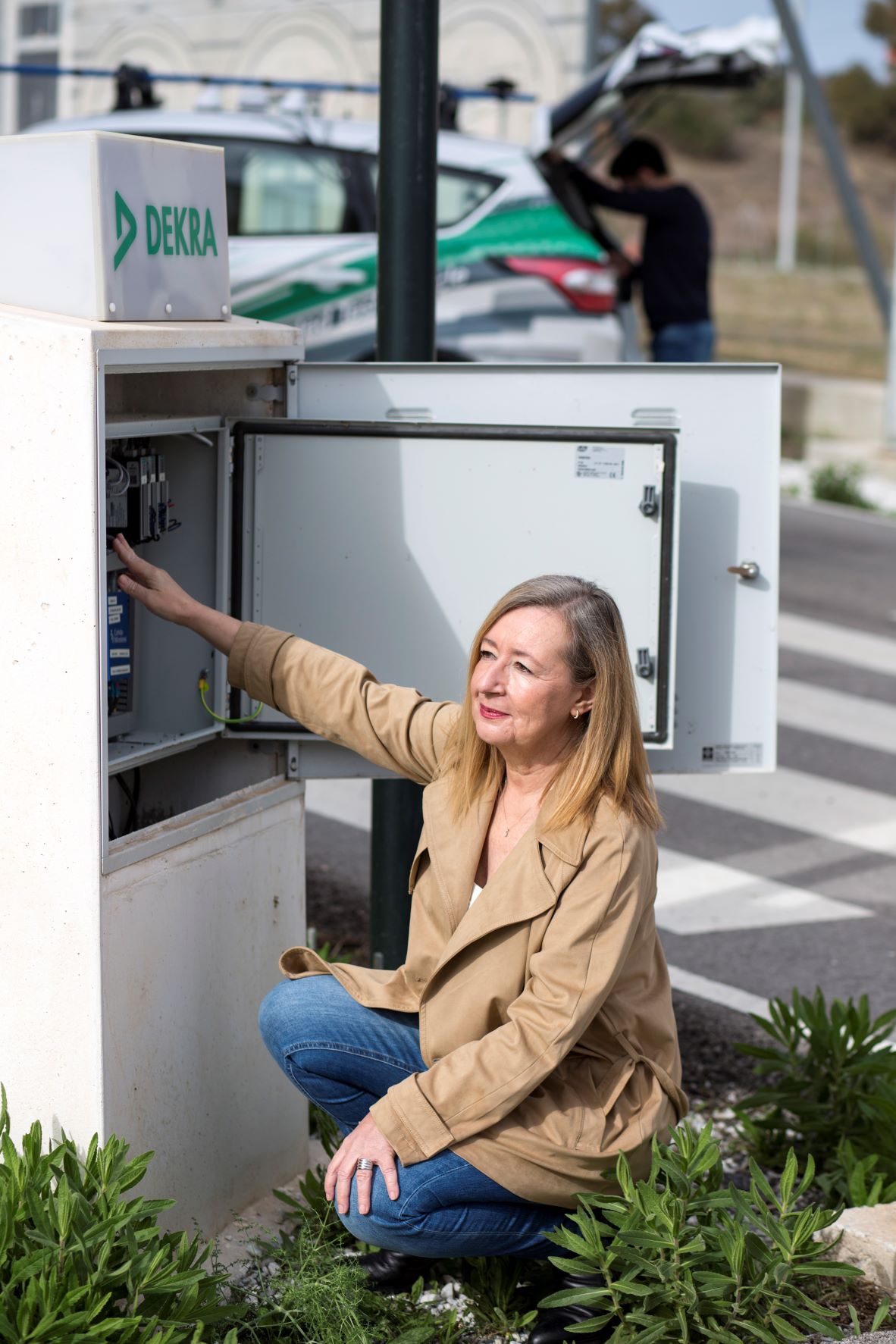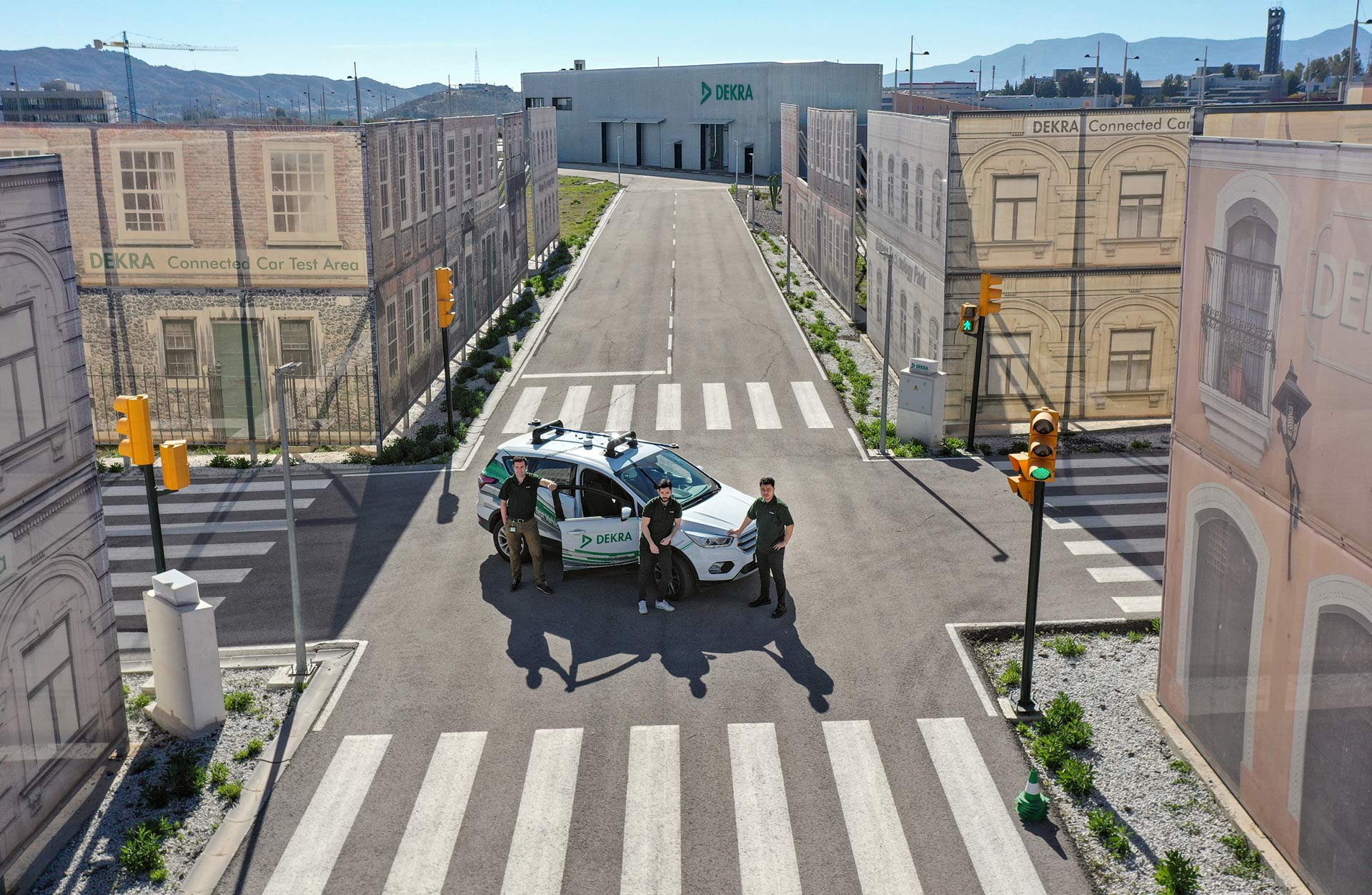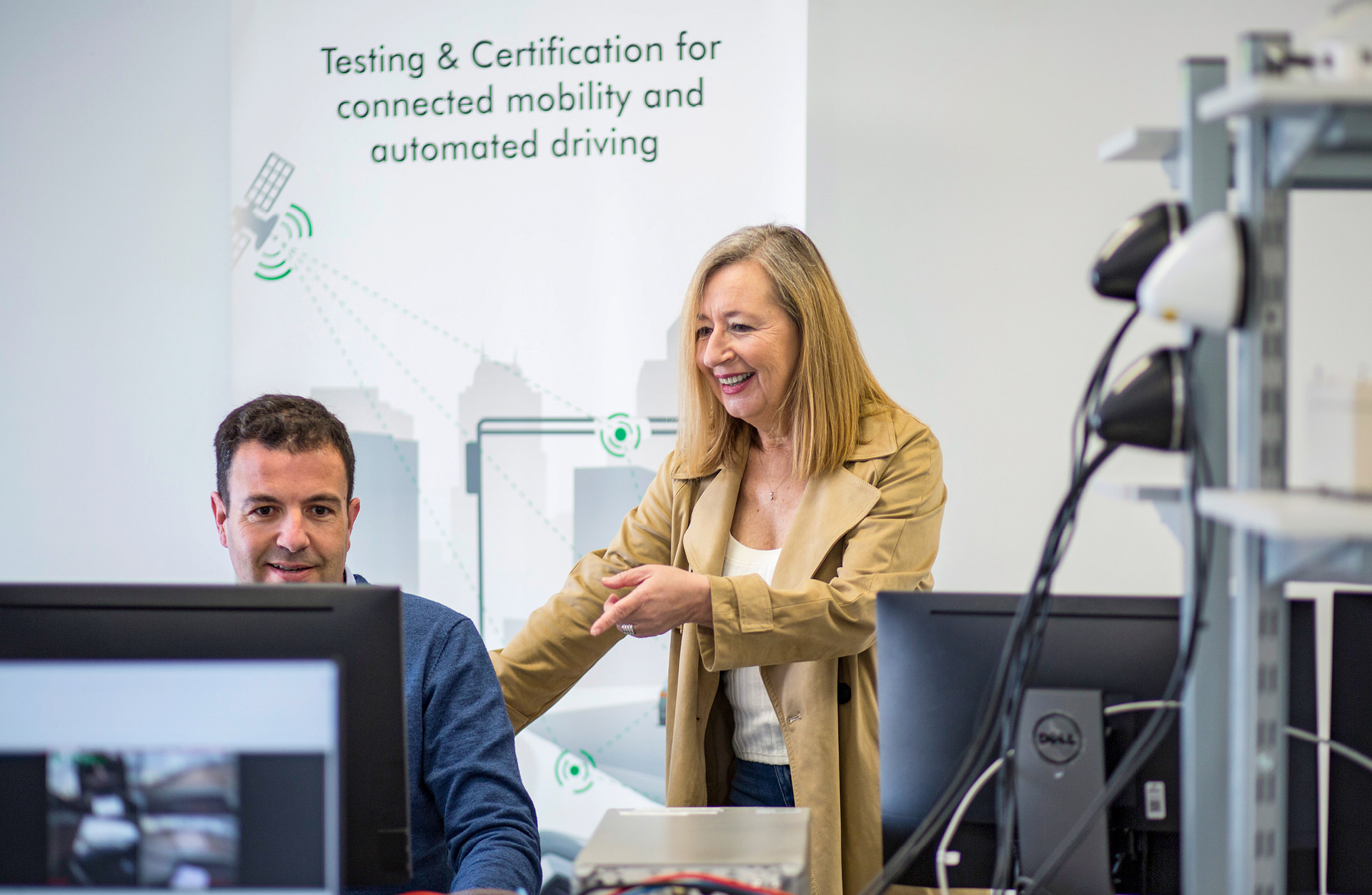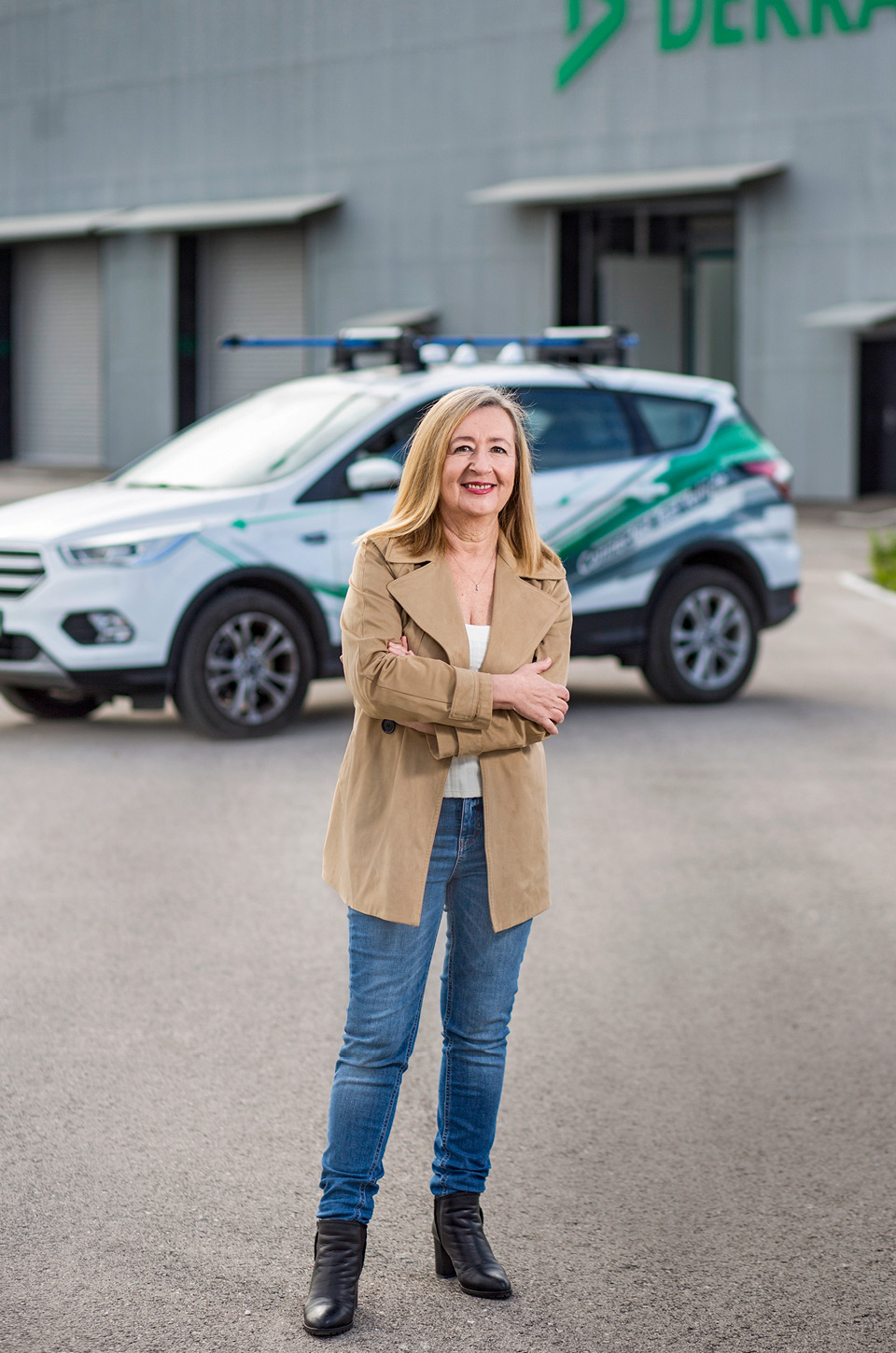Future mobility: connected and automated driving in Málaga, Spain
V2X? 5G? IoT? RFID? You got it? The world in which Rosario Trapero moves is full of these acronyms. Sometimes she has to stop for a moment and think about what they actually mean. This is because she uses them every day as a matter of course in her dialogue with experts and customers around the globe. After all, she is a sought-after expert herself and Head of Connected and Automated Driving, Service Division Product Testing at DEKRA in Málaga, Spain.
At the beginning of her professional career, Rosario always liked to throw herself in at the deep end – true to her credo: “Try to discover something new every day and to develop yourself further. Nothing is worse than boredom and doing the same old thing.” She enjoys familiarizing herself with new technologies, getting projects up and running – and then enthusiastically turning her attention to something else, something new.
Fresh out of university, she was initially involved in computer design for Fujitsu. A little over three years later, in 1992, she signed on with an international testing company, where she was involved in the setting up of the telecommunications testing lab. Later – the company had consequently changed its name to AT4 wireless – she was involved with the wireless transmission of data and then with IoT (Internet of Things) projects; among other things, she led the development of the first test tool for RFID (radio-frequency identification) components for her company.
V2X – the magic word of the day
In 2015, when DEKRA acquired AT4 wireless, it was no different: the strategic acquisition was aimed at leveraging the company’s existing expertise in network technology to advance DEKRA in the field of connected and autonomous driving. V2X was the magic word of the day: “Vehicle to Everything,” the data-driven communication of the car with its environment. And Rosario was once again given the opportunity to venture into something completely new.
“I honestly had no idea about this,” Rosario recalls. “We had never dealt with cars, trucks, or motorcycles at this company before. We specialized in wireless network and mobile communications testing. But I was given the task of designing a lab and test track for connected and automated driving.”
She gladly accepted this exciting challenge and thoroughly delved into the subject. Naturally, this was based on her knowledge of electronics and physics. The crowning highlight was a visit to the OmniAir trade show and conference in San Antonio, where she received decisive impetus and contacts for her project.
DEKRA test area Málaga
All this knowledge flowed into the test track, which was ceremoniously opened less than one year later. A delegation from DEKRA’s parent company arrived, and all the political and business celebrities of the up-and-coming Málaga region paraded through the test track, which, with its artificial facades and intersections, looks like a movie set.
A white Ford Kuga, packed with cutting-edge technology, is making its rounds on the approximately 50,000-square-meter site on the Andalusian coast. “With our test vehicle, we are able to test the function of components that serve connected and automated and ultimately autonomous driving in an environment that recreates real-life situations without endangering other road users,” says Rosario. All the external factors that the complex technology has to cope with are only present virtually: “More than 30 radio transmitters distributed around our test area simulate stationary elements, such as traffic lights, traffic signs, and the like, but also moving elements such as other vehicles or pedestrians.”
But that is only part of the services that the test area, which operates in conjunction with the DEKRA Technology Center in Klettwitz (Germany), can offer, says Rosario: “In our two laboratories, which are located directly on the test track, we can simulate many more traffic situations completely virtually, whether in the city or on the highway. More than 100 different cars, trucks, motorcycles, bicyclists, and pedestrians are available to us in the test scenarios.”
All test methods, both computer and real-world, are based on the globally recognized standards for manufacturers of vehicles and components. In 2021, for example, DEKRA in Málaga itself was the first test center worldwide to receive the US OmniAir qualification for C-V2X (Cellular V2X communications).


Transformation through digitization
This year, Rosario will celebrate her 30th anniversary at the company. Constant change at the spearhead of advancing digitization has defined her career. The last big change in Rosario’s professional life was her move to the Product Testing service division on the one hand and the coronavirus pandemic on the other. More than usual, she works virtually, and she thinks that’s a good thing: “If you look at it from a technological point of view, the pandemic has brought us a lot of progress: thanks to the very easy-to-implement virtual meetings, I can have a meeting with several customers or colleagues at the same time – and all this in different time zones and without having to travel myself. That’s terrific!”
However, she also enjoys the days when she simply drives to the test site, discusses things with her teammates, or leads groups of visitors through the labs and shows them tests with real vehicles. After all, not everything has to be digital.
Three questions to the expert:
In those 30 years, what has been the most powerful, the most impactful change? Definitely wireless technology. I started my working life with a test system for fixed terminals – telephone, modem, fax. Wireless communications changed the world like no other technology after that.
As we know, we have not yet reached Level 5 – fully autonomous vehicles. So where is the journey going?
We can already carry out standardized tests in full and, thanks to our own 5G network, the existing V2X test tools developed by us, and, of course, our experts, we are already well positioned to fulfill all the requirements of our customers.
When will self-driving cars be driving through cities?
In ten to twelve years, it won’t be uncommon to see these cars on the road and, of course, in private environments, like factories, ports, or airports, much sooner. The great paradox, after all, is that it would take more automated vehicles on the road to make the technology safer. But it is precisely because the technology is still considered unsafe that it is not yet as widespread. From that perspective, the human driver is ultimately the uncertainty factor.
At our two laboratories, we can simulate many different traffic situations 100% virtually, whether in the city or on the freeway.
Rosario Trapero Miralles, Head of Connected and Automated Driving, Service Division Product Testing at DEKRA in Málaga, Spain.




